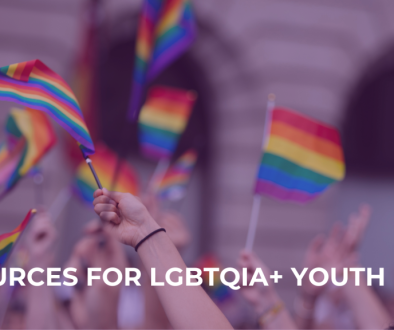A Call to Action: Preventing Youth Suicide
By Debra E. Koss, MD
According to the CDC, 22% of high school students reported serious thoughts about suicide in the past year and at least 10% made a suicide attempt. The percentage of attempts is highest among females (13%), American Indians/ Alaska Natives (16%), Black adolescents (14%), and LGBTQI adolescents (22%). The CDC also reports that suicide is the second leading cause of death among children and adolescents aged 10-24. We’re experiencing a public health crisis with devastating consequences for families and communities. This is an issue that requires immediate action to identify children and adolescents at risk for suicide, provide timely links to quality treatment, and prevent further loss. We’re reminded of this call to action each September as part of National Suicide Prevention Awareness Month. Of course, the call to action continues all year long. When we join as a community, including families, caregivers, educators, and health care providers, we can prevent youth suicide. Ultimately, as we provide help, we also share a message of hope.
What can you do to help?
- Recognize the warning signs and risk factors for suicide in children and adolescents
- Talk with children and adolescents about their feelings
- Learn about protective factors
- Know what to do if you’re concerned about a child or adolescent
- Share information about youth suicide prevention with others in your community
Do you know the warning signs and risk factors for suicide in children and teens?
Many children and adolescents who attempt suicide have a significant mental health disorder, such as depression. Children and adolescents with mental health issues present with significant changes in mood and behavior that impact day-to-day functioning. The following may serve as warning signs for suicide:
- Change in eating or sleep habits
- Frequent or lasting periods of sadness
- Withdrawal from friends and family
- Loss of interest in activities
- Frequent physical complaints, such as headaches, stomachaches, and tiredness
- Preoccupation with death, expressed in drawings, journals, or speech
- Aggressive or impulsive behavior
- Alcohol or drug use
In addition, research suggests that certain factors may increase the risk of suicide. These factors may include:
- A family history of suicide attempts
- History of trauma, such as bullying, discrimination, or sexual abuse
- Significant parent-child conflict
- Loss of a significant relationship, from a breakup or death
- Exposure to community violence
- Access to means for self-harm, such as firearms or medications
- Substance use
How do protective factors work?
Protective factors build resiliency and promote good overall health and well-being. Stated another way, protective factors are conditions that are likely to reduce the impact of risk factors. These factors exist at the individual, family, and community level and may include:
- Effective coping and problem-solving skills
- Positive parent-child relationships
- Access to quality mental health care
- Support from social connections in the community, such as schools and places of worship
- Success at school
- Spirituality or faith-based experiences
- Reduced access to lethal means of self-harm
What can you do if you’re concerned about a child or adolescent?
First, talk with your child or adolescent. A common misconception is talking about suicide will plant the idea in an individual’s mind. This is false. Asking an individual about their feelings, and specifically asking about thoughts of suicide, will let them know they’re not alone. If you see evidence of depression or suicide in a child or adolescent you might consider asking or stating:
- What’s wrong?
- How can I help?
- Are you thinking of killing yourself?
- We’re going to work together to keep you safe.
Next, if you learn that your child or adolescent is experiencing warning signs of a mental health disorder but not expressing thoughts of suicide, contact a mental health professional or your child’s pediatrician for an evaluation. Many of New Jersey’s pediatricians are enrolled in the New Jersey Pediatric Psychiatry Collaborative. Through this free program, you and your child’s pediatrician will have access to a child and adolescent psychiatrist and a clinical navigator who can assist with identifying mental health resources.
Finally, if you or someone you know is experiencing a mental health or substance use crisis or thoughts of suicide, call or text 988 or chat at 988lifeline.org. Connect with a trained crisis counselor at the 988 Suicide and Crisis Lifeline. It’s confidential, free, and available 24/7/365.
Author Profile:


Debra E. Koss, MD
Clinical Assistant Professor, Department of Psychiatry Rutgers-RWJMS
NJPPC Project Manager for the New Jersey Psychiatric Association




